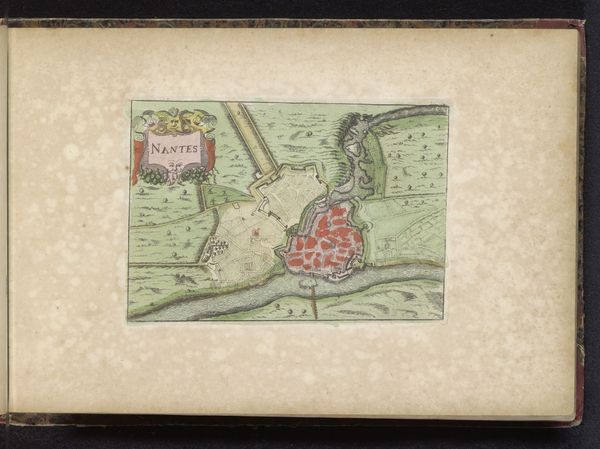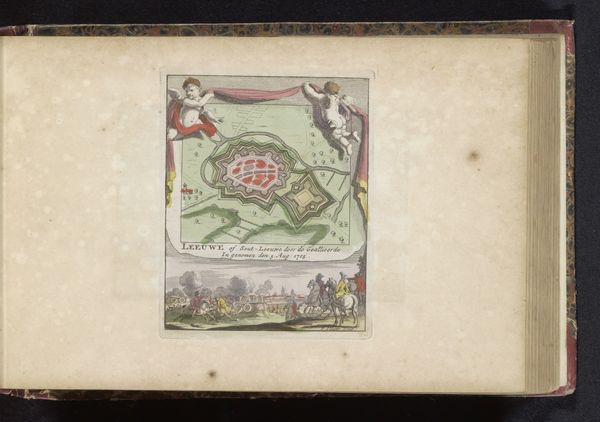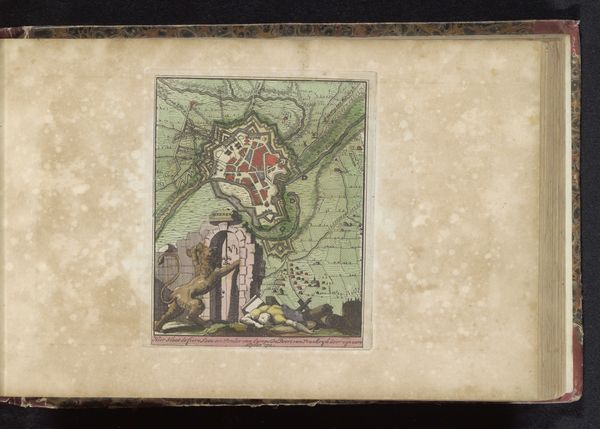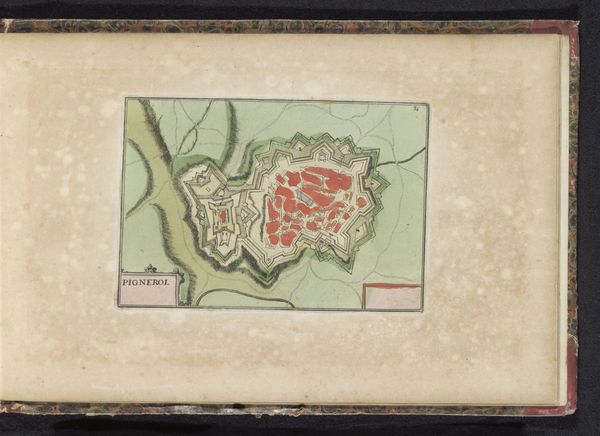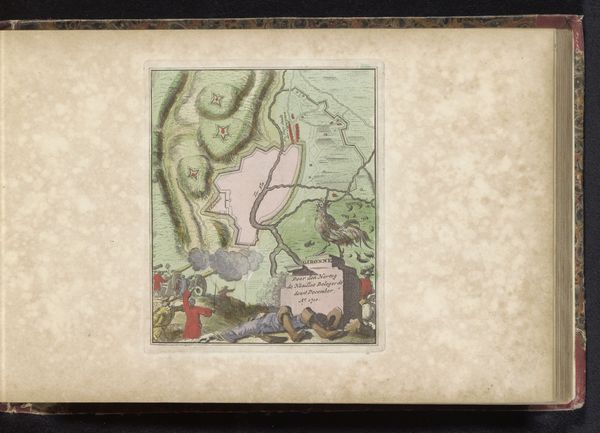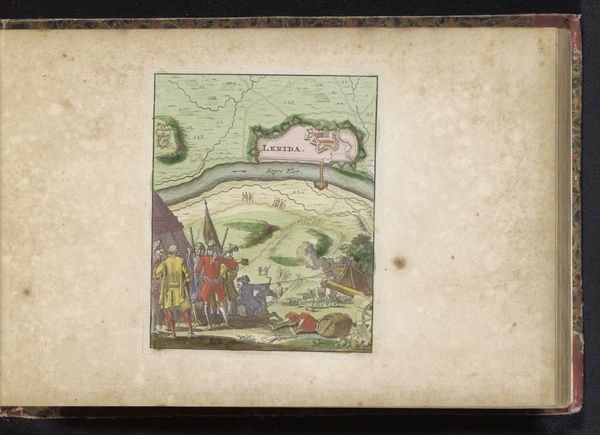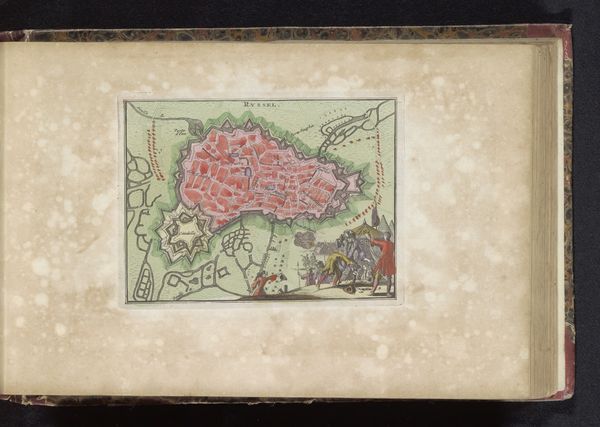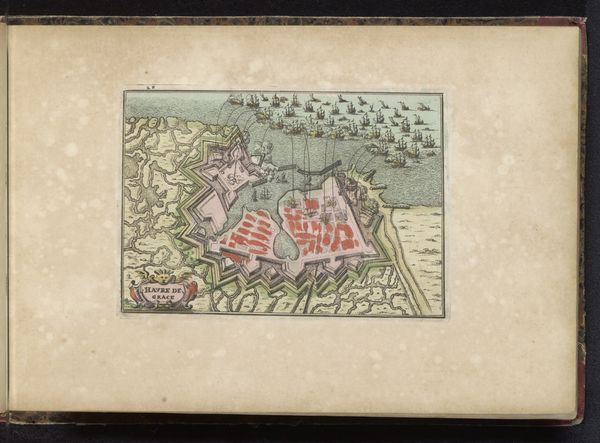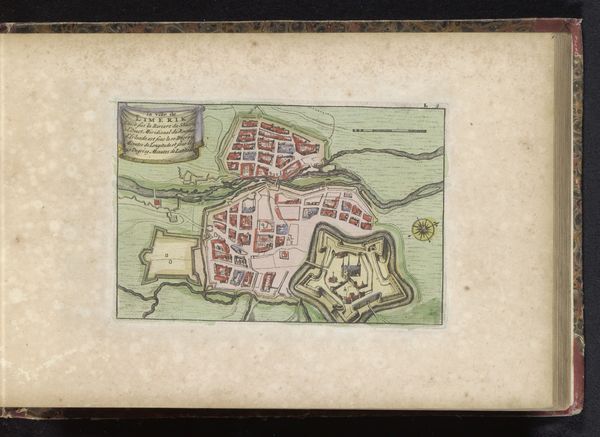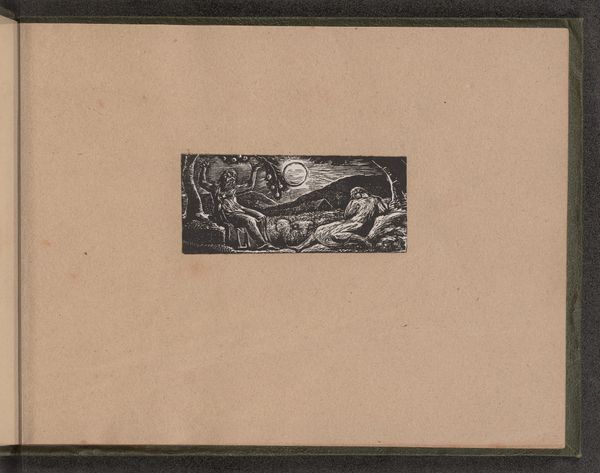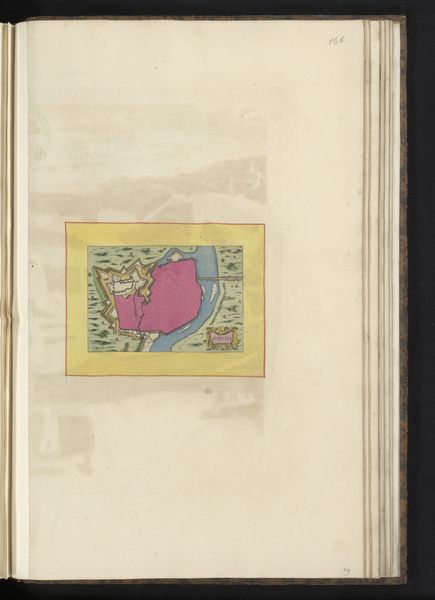
drawing, print, watercolor
#
drawing
#
water colours
# print
#
watercolor
#
coloured pencil
#
cityscape
#
watercolor
Dimensions: height 122 mm, width 175 mm
Copyright: Rijks Museum: Open Domain
Editor: This is "Plattegrond van Cuneo," a watercolor print created by an anonymous artist sometime between 1700 and 1735. I'm struck by the organized layout and the strategic military design of the city. What can you tell me about this piece? Curator: Looking at the symbols, notice how the city is almost caged, trapped within its own defenses. The star-shaped fort speaks to an era of constant territorial disputes. Consider the colors chosen, red for the city center: Do they evoke a sense of urgency or a vibrant lifeblood flowing through it? How do the water features act as both lifelines and barriers, emotionally and physically? Editor: I hadn’t thought about the red as potentially urgent. It made me think more of vitality, actually. Is there a reason cityscapes like this were popular at this time? Curator: These detailed maps acted as both documentation and propaganda. Each element is laden with cultural weight. The crest, the directional guides, they aren’t merely informative. What kind of power do you think possessing or displaying a map like this held back then? How does it subtly shape how you view the place depicted, even now? Editor: I see your point. Displaying this feels like a flex of knowledge and control. It's not just showing a place, it’s about knowing a place, strategically. Curator: Exactly! And that controlled perspective reflects the mindset of the era. It links this artwork directly to how people understood their place in the world and their relationship to power. We are looking not just at a city, but a worldview enshrined in symbolism. Editor: It’s amazing how much this piece communicates beyond just geography. I definitely see it differently now! Curator: Indeed, symbols often outlive their original intent but continue whispering stories if we listen closely enough.
Comments
No comments
Be the first to comment and join the conversation on the ultimate creative platform.
